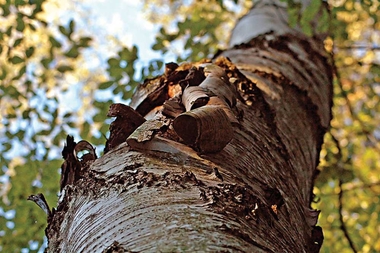Plant a tree!

by Sally Gilbert
Legal Columnist
One of Earth Day Network’s goals is to plant 7.8 billion trees over the next five years. Why do we need to plant trees? Well it depends on your perspective. Kids want trees to build houses in, climb on, hide in or for ammunition – pinecones, berries, etc. Adults value trees because they provide privacy, act as sound barriers, provide oxygen and slow down the wind.
Trees provide much-needed shade that can reduce our air conditioning bills. Properly placed trees can help with our heating bills. Farmers need them to decrease erosion and to produce fruit, nuts, seeds and other products. Oklahoma needs trees so Stratford and Porter can draw visitors to their peach festivals in late July.
As stewards of our planet, we want more and more trees to absorb carbon dioxide. CO2 is earth’s primary greenhouse gas. Those gases trap the sun’s heat in our atmosphere. Trees are also aesthetically pleasing. Some are pretty, some are maybe not so pretty, but interesting to look at, and some are both. Trees and other natural features create our landscapes.
There are plenty of books and websites to help us pick the best trees for our climate and soil. A few that do well here: Chinese Pistache, Lacebark Elm, Gingko, with unusual fan-shaped leaves, Bald Cypress, Sweetgum and Golden Raintree, although the last three put off needles, spikey balls and seed pods. Pinon pine trees grow well here and are not as susceptible to disease as other pines.
Many trees cannot survive in our climate. A May 2013 Norman Transcript article listed the five worst trees for Oklahoma. The very worst is the Bradford Pear, followed by Colorado Brue Spruce, Austrian Pine, Silver Maple and Green Ash.
One of the most important things we can do in Oklahoma is preserve water. Half of our water comes from underground aquifers and we are depleting them at an alarming pace for agriculture and industry and to fill our taps and hoses. Aquifers do not fill back up.
We can all help by using water-efficient appliances and fixtures like showerheads and faucets. We can decrease lawn size and use xeriscaping as much as possible. Xeriscaping uses drought-resistant, slow-growing, and clay-tolerant trees, shrubs, groundcovers, flowers and grasses to diversify and beautify our yards and public spaces. It also saves money. There are public xeriscape gardens at OSU’s campus in Stillwater and in Edmond’s Bickham-Rudkin Park at 33rd and Rankin.
We can preserve water by putting in a rain barrel to catch rain as it runs off the roof and use for outdoor watering. The barrel is usually a 55-gallon container connected to guttering with a downspout. The barrel can be as plain or decorative as you choose. You can use a rain chain instead of a downspout. It hangs from your guttering to an opening in the barrel. You can make it yourself or buy it. Rain chains can be made of simple links or with a series of cups running down a chain to the barrel.
Plant on!
The Gayly- 4/22/2016 @ 10:14 AM CDT





